We like rustic furniture best when we discover a cracked knot and particularly appreciate the wavy grain rosewood veneer or the poplar bubo tabletop. These are actually tree growth defects that are not commonly found and are all the more appreciated for that. The problem is that the defects generally lead to changes in the characteristics of the wood and sometimes to reduced strength. It is good to be aware of them in order to use the wood in areas where the defect does not bother or can be converted into quality, thus avoiding loss of wood mass.

How they occur and what are the growth defects
Defect is considered any deviation from normal growth, tree structure, composition and appearance. The reasons for these irregularities are related to the characteristics of the species, growing conditions or accidents during the growing period. Some species are more prone to the occurrence of a defect than others. For example, the occurrence of curly grain is quite common in palms, whereas in other species it is an exception.
Growing conditions have a strong impact on tree development. Important are the area where the tree or forest is located, forest or single growth, extreme weather events. A tree growing on a steep slope is more likely to change trunk shape than one growing on flat ground. This is a common defect in larch, a species of coniferous tree that likes mountainous areas. Changing lightness in a heavily cleared forest can lead to irregularities in annual rings. If it suddenly gets more light the ring deposited that year will be wider. Very high temperatures, frost before the dormant period, dry periods and strong winds can all affect the development of the tree and lead to defects.
A short story about dry spells. I have a tree in front of my house that has been planted for over 20 years. It has grown hard, the pollution of the city, the scarcity of land and water trying it hard. Two years ago the water shortage was even more acute. It was the beginning of the pandemic and I had made my "desk" in the library, by the window in front of which the tree stands, so I could easily watch its growth. The tree budded and the young branches began to grow from the base. The sap that reached the top was too little for normal development and the top grew small and limp. In a few days, one of the laterally developed branches began to rise, gradually taking the place of the top which became the side branch. It was a wonderful lesson in survival and continuity. From the point of view of growth defects, however, there is discontinuity of the trunk at that place and certainly, in the interior, the fibre is deflected.
There are other accidents suffered during growth that can lead to defects. For example, resin pockets inside the fir wood are the result of wounds on the trunk. As the wood grows and settles, the resin-protected wounded area is exposed when the wood is cut. Sunken bark or knots are also growing accidents.
The main growth defects are:
- trunk shape defects
- defects related to the wood structure
- nodes
- cracks
- abnormal colorations.
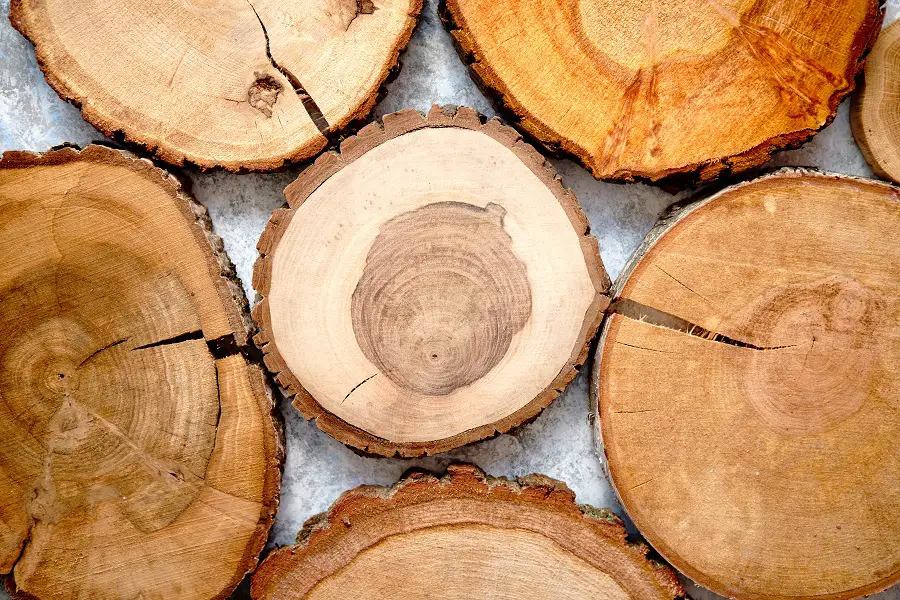
Shape defects
Shape defects refer to the trunk because it is the main exploited part of a tree. In mature trees, those suitable for harvesting, the trunk represents 60% of the total volume in deciduous trees and 85% in coniferous trees. The straighter and more uniform the trunk, the more valuable it is. Any deviation from an imaginary vertical axis at 90° to the horizontal results in reduced processing yield, loss of wood mass and reduced construction qualities. Such logs are mostly obtained from forests, less from single trees. Forests must be properly harvested and old trees removed to avoid falls that deform other trees by leaning against them.
Curvature is the curved deviation from the trunk axis. There may be a single deviation along the entire length of the trunk or several, in the same plane or different planes (the trunk appears veined). This is an important defect that decreases the compressive strength of wood used in construction. A post made from such a truss can yield to the compressive forces generated by construction and it is therefore recommended to avoid its use. Logs with curvature are cut with loss of wood material, and the resulting pieces may warp or crack on drying due to the fibres not being parallel to the axis of the piece. A special case of curvature is the getting well, a curvature in one plane at the bottom of the torso. It is a specific defect lariței.
Taper and barking are deviations of the trunk from the cylindrical shape. Taper is the abnormal decrease in trunk diameter from base to tip. A taper above 1% is considered abnormal. The calculation is made by dividing the difference between the diameter of the base and the diameter of the tip by the length of the trunk. The defect decreases the yield of flow or unrolling to obtain veneers. Barking is abnormal and sudden thickening of the trunk measured at one metre from the base. Pieces cut from this area have a bent grain and deform when drying.
The trunk normally has a circular cross-section. Ovality is the deviation from this form and is a defect when it is very pronounced. In this case there are losses during cutting and the pieces obtained have uneven wood due to the different width of the annual rings.
Canelura is also a deviation from the circular shape of the cross-section and represents a curving of the cross-section. The wavy shape of the circumference is also transmitted to the annual rings. It is a defect that occurs frequently in carpenbut it is also found at yew, anin or juniper. The defect causes problems when milling to obtain roundwood, which is also used in construction at round wooden houses or veneers, and when cut, the result is a low compressive strength, slanted fibre part.
The infuriating is the division of the trunk into one or more main branches that develop separately. In that area the wood has concave hearts (a structural defect) and sunken bark, its structure is irregular.
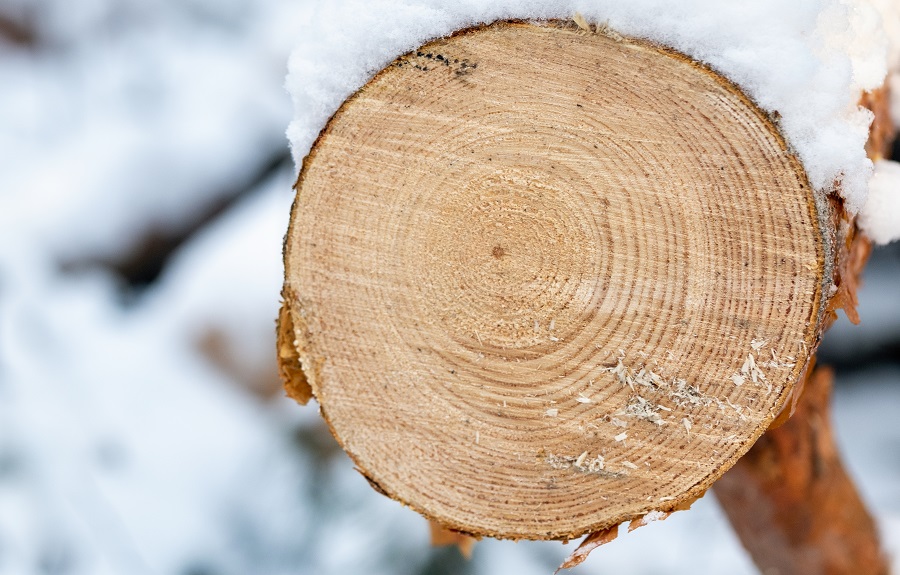
Structural defects
Structural defects are also growth defects, often following on from shape defects, but also defects that have no external exponent, being related only to the structural elements of the wood. When used for furniture or decorative objects, most of these defects are transformed into qualities, making an essential contribution to the success of the work.
Irregular rings is the most common structural defect and occurs due to different growing conditions from year to year. It is manifested by different width of the annual rings seen in cross section. The greater the differences, the more inhomogeneous the wood and the more difficult to predict its behaviour.
Crimped or crimped fibre is one of the flaws sought by wood lovers. It is found in deciduous trees, especially in frasin and paltin. It is called a defect because it is an abnormal growth, but it is only an exception, the wood is even superior to ordinary wood, both aesthetically and in terms of properties. The curly palms used for obtaining musical instruments is such a happy exception.
Inclined fibre is the deviation in plane of the annual fibre and rings from the longitudinal axis. It is the result of defects in the trunk (tapering, widening, curvature) or of flow along an inclined plane. Such pieces have low compressive strength and are difficult to grind as the fibre is rough. Inclined fibre elements should not be used in load-bearing structures for houses.
Twisted fibre is the regular helical deflection of the fibres around the trunk axis. It is a regular deflection because the fibres remain parallel to each other. On the tree, the defect can be recognised on the cracks in the bark that are inclined in the same direction. It is a low quality wood that is difficult to process, has low mechanical strength and the pieces warp a lot when drying. Specific especially to singularly grown trees.
Tangled fibre is an irregular local deflection of the structural elements of wood. It is found in so-called gulf or bube and it's very spectacular. It occurs due to irregular cell development and is considered a kind of cancer, a tumour of the shaft. In the throat area, the wood no longer follows the usual structure of the species in question and is uneven, difficult to work and hard to sand to obtain a smooth and fine surface. However, the unique beauty of the resulting piece far outweighs the effort.
Compression wood appears on the softwood and consists of thickening the late wood in the annual ring and staining it dark red-brown. The affected wood has different structure and properties from normal wood because it contains more lignin. Swelling and shrinkage is more pronounced, it is harder and less resistant to traction. It cracks and warps strongly on drying. Even though it is harder, its use in construction is not recommended because of the marked dimensional variation.
Eccentricity is the lateral deviation of the spinal cord from the centre of the trunk. It is a result of ovalization and is also accompanied by uneven annual rings. Building elements have low strength and the cut elements deform and crack on drying.
Concentric heart is the result of tree defoliation and occurs in all species. The wood from the swelling zone is inhomogeneous, deforms a lot and is difficult to process.
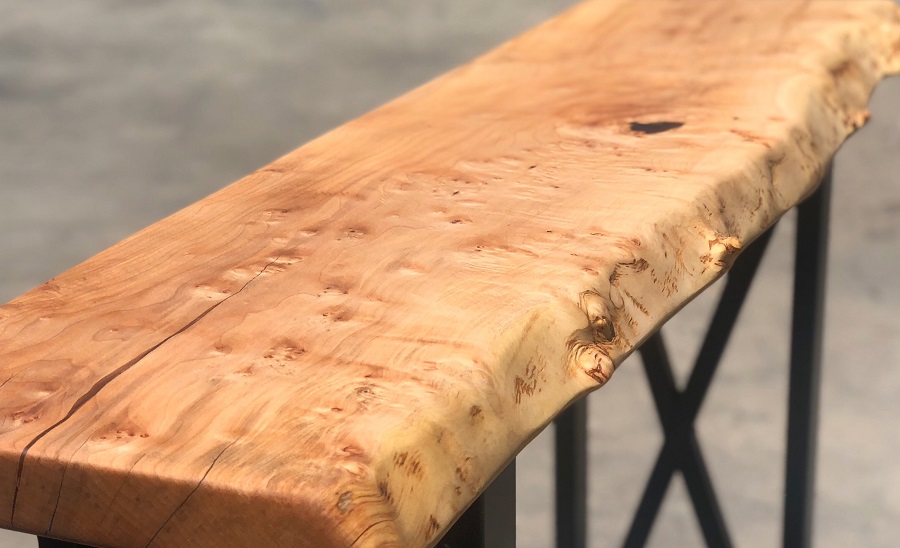
Knots and cracks
Nodes are the remnants of branches caught in the wood and are the most common defect. In the knotty area the wood is difficult to process, has different properties and strengths and sometimes has to be removed. Softwoods have more and smaller knots than hardwoods. There are fixed knots and dropping knots, healthy knots and diseased knots. Subject wood knots has been developed at length in another article which you can find here here.
Cracks are discontinuities in the wood mass and occur in both trees and processed wood. The most common cracks occurring during tree growth are galls and burls.
Frostbite or frostbite occurs along the trunk and forms in years when frost has come before the tree enters the dormant period (early frost), when the wood is still full of water. It occurs mainly in hardwoods - oak, nuc, ulm. Gelivora can be open, with swelling on the bark due to scarring growths, or closed, inside the tree.
Rulura is the removal of woody tissue at the annual ring boundary. It occurs frequently in molid, brad or chestnut and it is the result of very strong winds that make the trunk bend a lot and so the rings slide on each other. The defect is favoured by the presence of uneven rings.
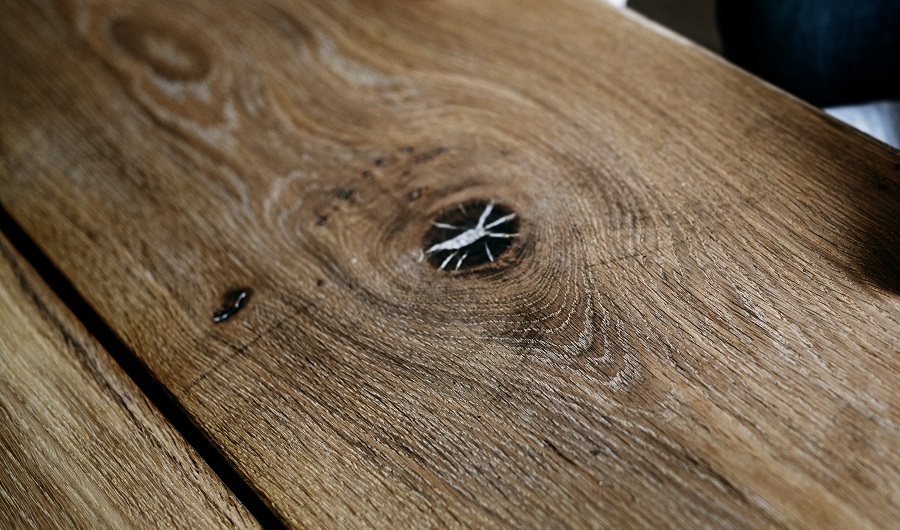
Abnormal colorations
Abnormal colours are those that differ from the usual colour of the species and may occur locally or throughout the tree. They do not normally lead to significant changes in the strength of the wood. The best known are false heartwood and lunation.
The false peach is a different colouration that appears in the central area of the trunk and is specific to species that have no difference in colour between sapwood and heartwood. It is found in ash (brown heartwood) and palms (black heartwood), plop and you (grey heartwood), oak (red heartwood). Such colourings can make the piece of wood unique and highly prized.
Such false heartwood is commonly found in fag and is called the red heart of the beech. In the central area of the cross-section, the colouring varies from light red to reddish-brown, with purplish or bluish-grey iridescence. The shape is irregular, it does not follow the annual ring, the colouring is uneven and is delimited by a darker line. By steaming the colour becomes uniform, but differs little from that of steamed red heartless beech. Beech with red heartwood impregnates and colours more slowly. It has low elasticity and is therefore more difficult to bend, with the risk of cracking.
Lunura can be seen in the cross-section of the trunk and consists of the presence of annual rings in the heartwood area with the colour and consistency of sapwood. It is the result of early frost, the affected wood no longer matures, does not develop into heartwood and remains with sapwood characteristics. The area is softer and rots more easily as it is water-hungry. It is a specific defect of oak. The use of this wood in outdoor projects should be avoided.
Bacterial and fungal attack can lead to false staining, but this usually occurs after the tree has been felled and is not considered a growth defect. This is the case of blue stain on wood, about which you can find more information here.
Insects, too, through the holes and galleries they make, lead to the appearance of defects, but their attack on wood occurs mainly after felling, and is even found in finished objects. Woodworms are such insects and you can find information about them here. It is possible that the wood is also attacked standing up, but then we are dealing with diseases that need to be treated in order to avoid total destruction of the forest. Such a situation occurred a few years ago when chestnut trees of the edible variety were attacked and almost died out. I will come back to wood-boring insects soon as this is a vast and important area.
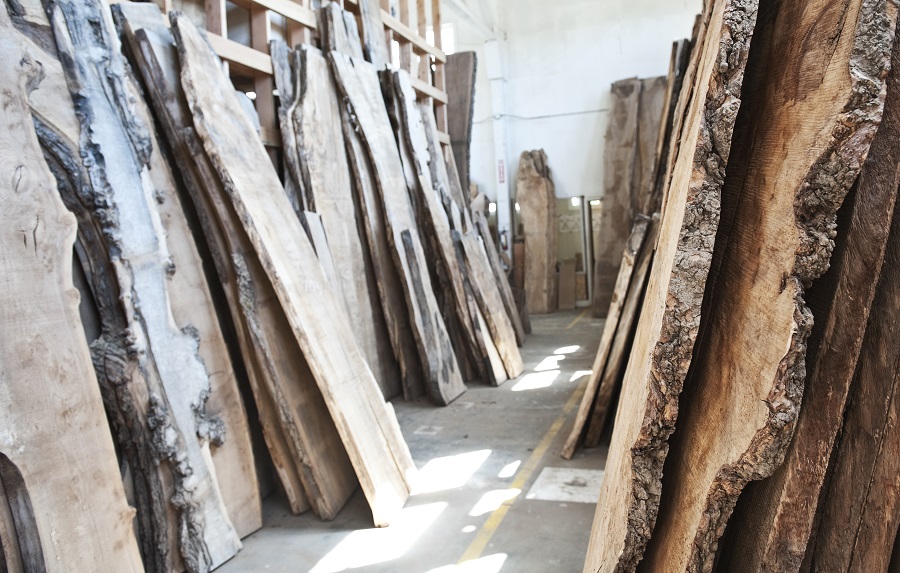
I hope you find the above information important. If you have any additions, questions or queries, please leave them in the space below. I will certainly reply.

















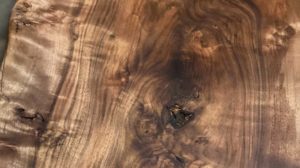




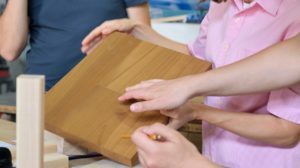

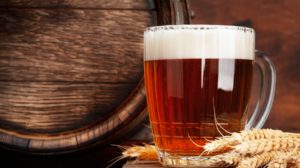


I want to make a few rounds of about 3 cm thick from a pine trunk from the yard, cut this winter, to make a rustic table/chairs. How long should these rounds take to dry before I can join/work them?
Could I do a quicker drying, for example in the attic of the boarded up house, where in summer the daytime temperatures are very high? What about in the oven with the stove door ajar?
Roundels are very susceptible to cracking, even if the tree has been cut in winter. Do not rush drying under any circumstances, excessive heat will surely lead to cracking. To control water leakage, protect the two faces of the roundel with paraffin solution or a diluted water-based primer. Lay the roundels on wooden stakes, and place the stakes between them if stacking them, so as to allow air circulation throughout. The quickest and safest way to dry wood is by air circulation. Drying should take place in a place where there is a draught (air circulates normally), preferably cool (cellar). High temperatures will only damage the logs.
Because of the cross-cutting, water will come out faster and the climb will not take as long as with boards cut along the axis. But you still need 2-3 months if you want the round logs to stay whole. Protection with paraffin or primer is very important.
For quicker use, the round can be stabilised. I leave below a link to an article about stabilizing green wood.
I am also leaving you a link to articles related to drying.
https://revistadinlemn.ro/2018/06/13/stabilizarea-lemnului-verde-pentru-evitarea-craparii/
https://revistadinlemn.ro/2021/09/02/am-taiat-nucul-cum-il-usuc-sa-nu-crape/
https://revistadinlemn.ro/2017/07/04/uscarea-lemnului/